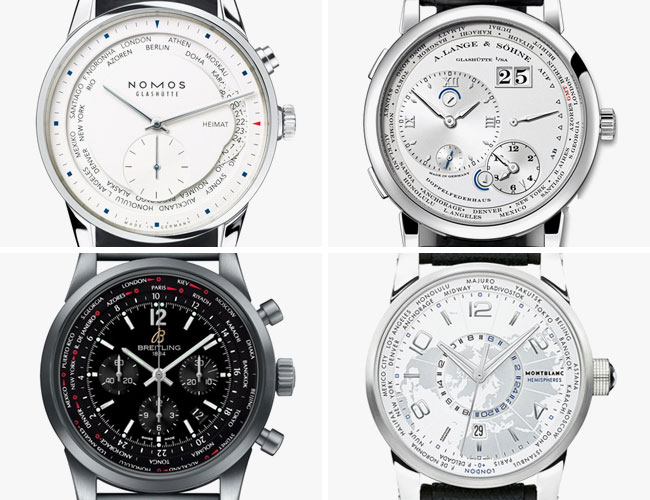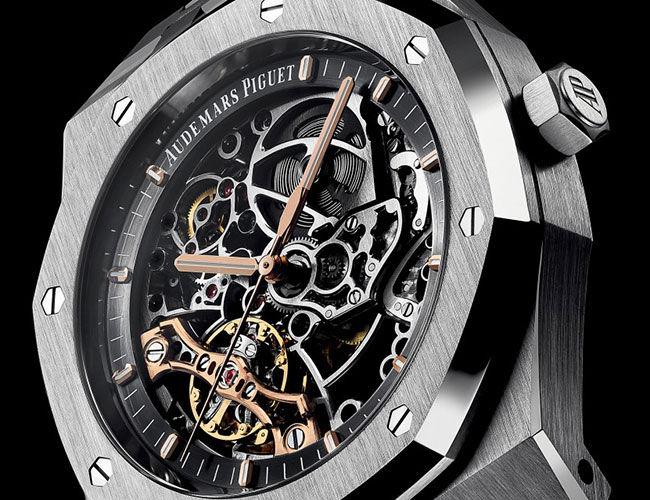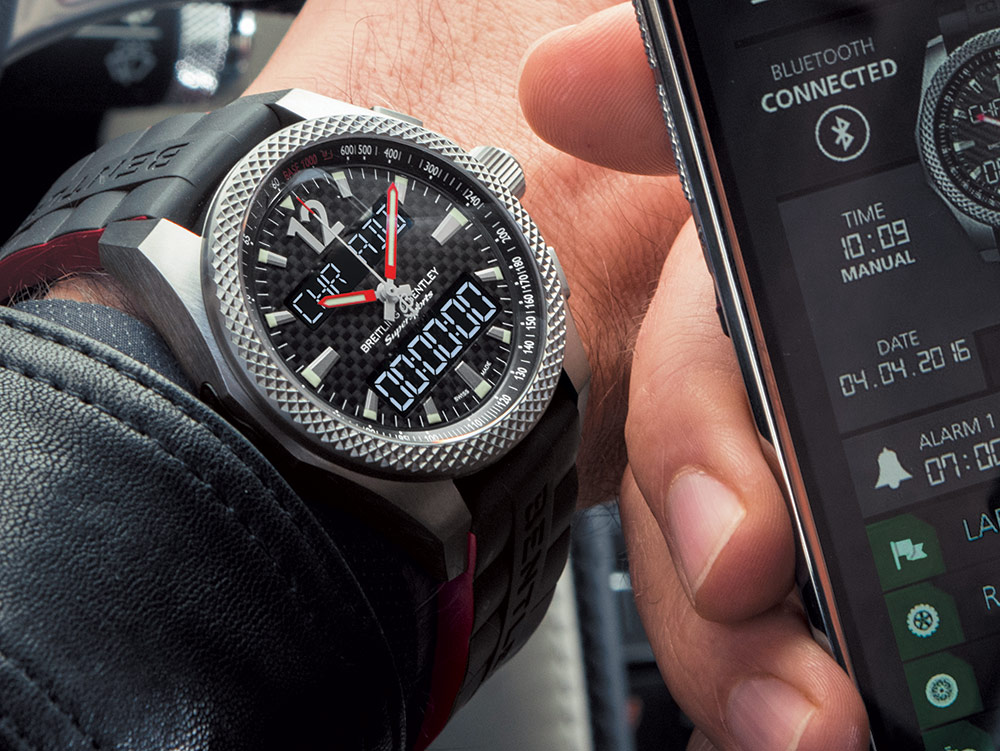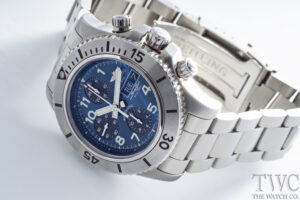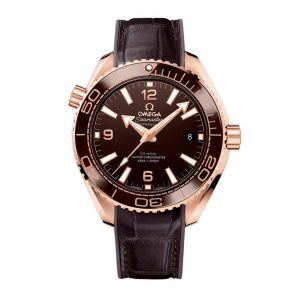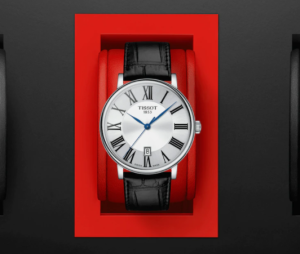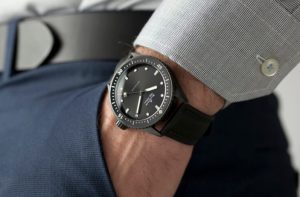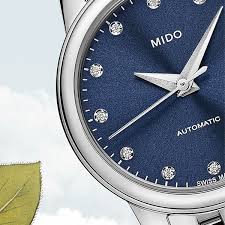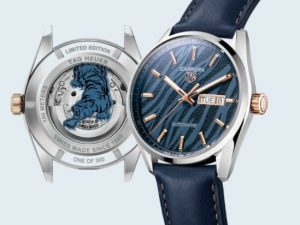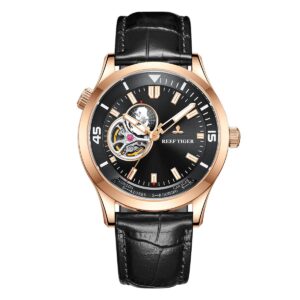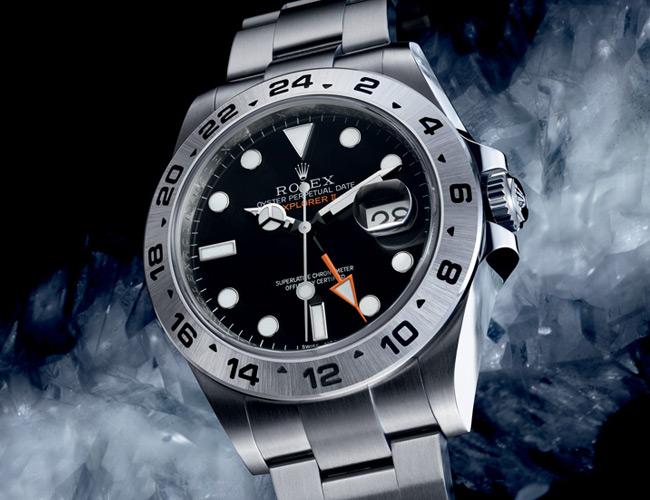
Any function on a watch beyond merely telling time is called a “complication”, and it’s a fitting term. Even adding a date function involves the precise addition of gears and linkages to make that number flip over every 24 hours. Aside from the mechanical wizardry of watch complications, there is also a rich history intertwined with their development. Over the next several months, our “It’s Complicated” series will examine seven of the best known watch complications — the chronograph, the moonphase, the annual calendar, the minute repeater, the GMT, the world timer and the perpetual calendar — explaining how they work, their history and a handful of modern timepieces that best exemplify them. – Jason Heaton
On May 2, 1952, 36 people boarded a De Havilland Comet jet owned by British Overseas Airways Corporation (BOAC) and flew nonstop from London to Johannesburg. The Jet Age had officially begun. Pan Am quickly ordered 20 of Boeing‘s new 707 jetliner and built its WorldPort terminal at JFK while TWA countered with its own World Flight Center. It was a brave new world that saw cigarettes on planes but not a roller bag to be found. People were suddenly able to fly across oceans and time zones in a day, which also introduced the decidedly modern ailment known as jet lag.
More Watches 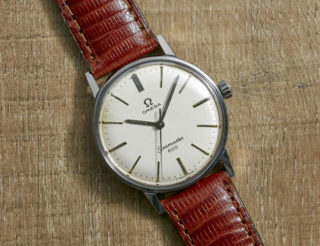 The Watch News You Missed This Week
The Watch News You Missed This Week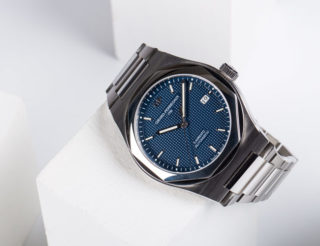 Girard-Perregaux Revives a Forgotten Watch from the ’70s
Girard-Perregaux Revives a Forgotten Watch from the ’70s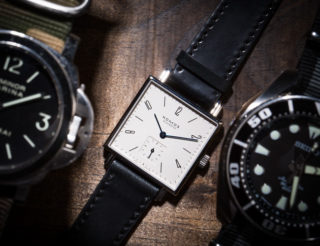 The Argument for a Smaller Watch
The Argument for a Smaller Watch
The pilots flying these long haul routes needed a way to keep track of time, both local time and the time in the place from where they departed. Pan Am approached Rolex, the watch brand that Hillary wore up Everest and Cousteau wore in the deep, and requested a watch built for this new breed of pilots. In 1954, the GMT-Master was born, a watch that could track two time zones simultaneously.
The concept of GMT was not new in the 1950s. In fact, it dates back to 1884 when an international convention declared Greenwich, England as the “Mean Time” against which the rest of the Earth’s time zones would be compared. But GMT was established in an era of slow boat travel, and time zones were crossed over days and weeks, not hours. Jet airplanes changed all that.
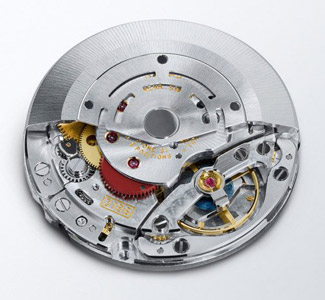
The movement housed in the famed Rolex GMT-Master.
By 1955, the atomic clock had been invented, and in 1960 the US and UK synched their atomic radio time signals into what would become Universal Time Coordinated, or UTC, which effectively replaced that meridian line that passes through the Royal Observatory in Greenwich. But the name “GMT” stuck and still somehow conjures up the dawn of the Jet Age, when knowing where you were in relation to a stripe on the ground in Old Blighty was first made important, just as the famous red-and-blue bezel of that first GMT-Master watch on the wrist of a Pan Am captain does.
The GMT watch is brilliant, not because of its complexity but because of its simple ingenuity. Because the going train in a conventional watch is geared to spin the hour hand around the dial every 12 hours, all that is required to become a GMT tracker is simply a second hour hand geared to run half as fast and an additional 24-hour time scale. In other words, the 24-hour hand circles the dial once a day instead of twice, its tip pointing to the corresponding hour, leaving no confusion as to whether it’s a.m. or p.m.
The iconic red-and-blue “Pepsi” bezel that is so associated with the early Rolex GMT-Master was Rolex’s first solution to the two-timing conundrum. The so-called “GMT hand” points to the 24-hour time scale on that bezel (blue for nighttime hours, red for daylight). And because the bezel turns, any hour can be set to correspond to the GMT hand, thus instantly tracking a second time zone; utterly genius, incredibly simple. But if the bezel allowed for the tracking of any second time zone, why was the watch called the “GMT” Master? As part of their navigation and communication protocols, pilots always operate on GMT (or UTC) time, to eliminate any confusion. So those Pan Am pilots would always have their 24-hand set to GMT, no matter what their local time was.
If the Breitling Navitimer chronograph was the definitive pilot’s watch of the 1950s, its slide rule bezel and busy dial made it a quaint relic by the time the Jet Age hit its stride in the ‘60s. The GMT-Master became the de facto pilot’s watch, and was seen on the wrists of fighter jocks and astronauts alike. But the Rolex, and other watches that followed suit, trickled down to coach class too, as jetset travelers saw the obvious advantage of a two-time zone watch, as well as the image it projected. Wearing it branded one as a traveler, someone who crossed time meridian lines and explored exotic corners of the world.
UP NEXT

The earliest GMT watches were simple beasts: the 24-hour hand was anchored to the hour hand so that as you adjusted your local time, the GMT hand moved in tandem, thus tracking the local time as well, but on a 24-hour scale. To set a second time zone, it was thus necessary to turn the bezel. Nowadays, there are more sophisticated movements and they can be generally divided into two types. The first type has an independently adjustable GMT hand, meaning it can be set separately from the local time indicated with the hour hand and is not linked to the date function. The second type links the GMT hand to the minute hand while the normal hour hand is independently adjustable and is linked to the date. The second kind is considered more of a classic GMT watch and is slightly easier for use while traveling, since flipping the hour hand forward or back without messing with the minute hand is quick and easy as your plane touches down in London or Buenos Aires.
While GMT watches were first created for pilots and are historically linked to aviation, they have since taken on a reputation as a consummate adventurer’s watch, useful for the one-watch traveler who wants to touch down in Kinshasa and head straight into the jungle. Good water resistance, rugged cases and legibility are the hallmarks of the new breed of GMT watches. We’ve picked five of the best and all of them are ready to hit the ground running.
Bremont MBIII
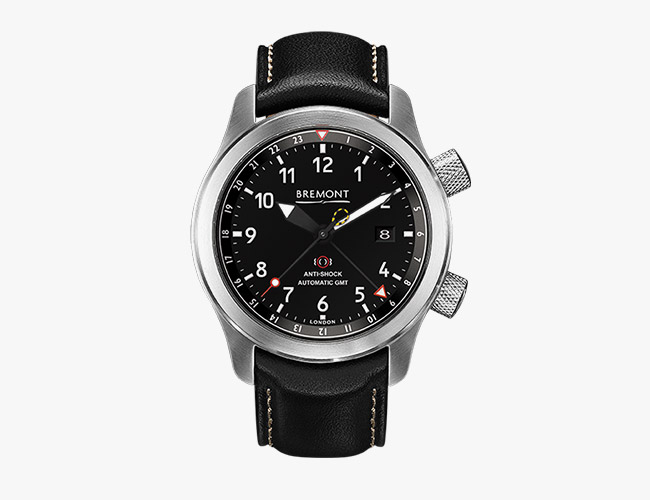
The MB series is considered by many to be Bremont’s most capable and emblematic watch. Designed and tested with the help of British ejection seat company Martin-Baker, it is a consummate pilot’s watch, built to withstand everything from an ejection at 40,000 feet to an unplanned water landing. With its third edition, the MBIII, which was introduced last year in Basel, the watch grows a GMT hand and its rotating inner bezel gets 24 markings, completing the picture for the globetrotting adventurer.
Learn More: Here
Kobold Langley GMT
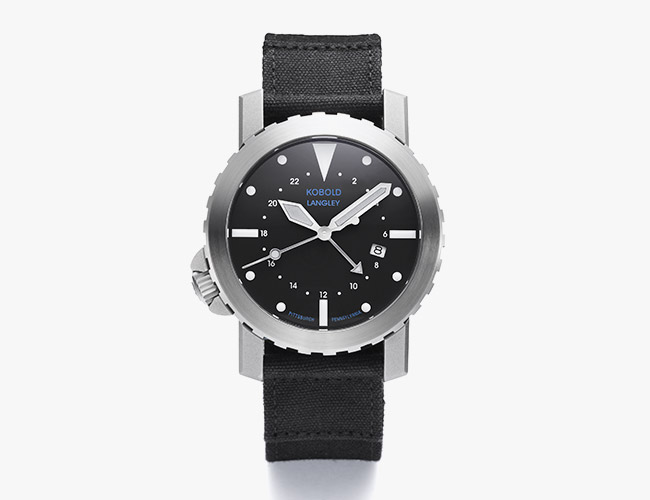
Kobold is an American brand with a reputation for making rugged no-nonsense watches that are used by special operations forces, police and polar explorers. The new Langley is Kobold’s first civilian quartz watch, which raises eyebrows among watch snobs but makes perfect sense in a watch designed for toughness first and foremost. The GMT timepiece is fittingly named for Samuel Pierpont Langley, a 19th-century proponent of what is now America’s standard time system. The watch’s case was designed and manufactured at Kobold’s Pennsylvania factory, and the diver’s version adds a rotating bezel and ups the water resistance from 300 meters to 1,000.
Learn More: Here
Rolex Explorer II
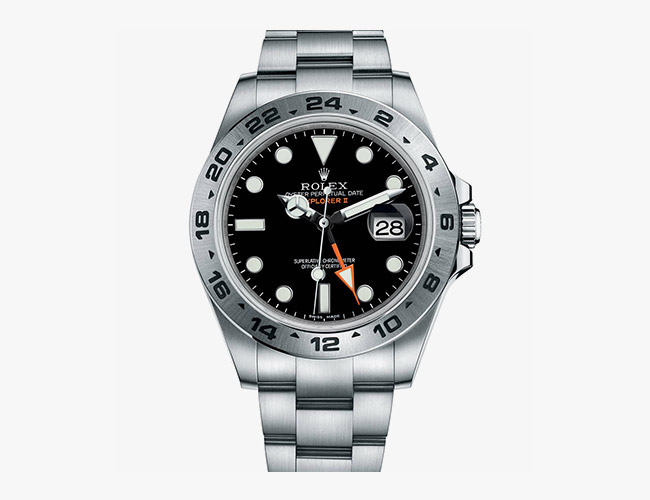
You can’t have a list of GMT watches and not include a Rolex. But while the GMT-Master was the archetype for the genre, the Explorer II has a no-frills aesthetic that flies a little more under the radar. The earliest Explorer II was designed for cave explorers and eschewed the rotating bezel, making the 24-hour hand merely a way to tell day from night. But the modern watch has an independently adjustable GMT hand which can track a second time zone. While a black-dial version is available, we like the “polar” white dial, which begs to be strapped on over a thick glove on a trek to the Pole.
Learn More: Here
IWC Ingenieur Dual Time
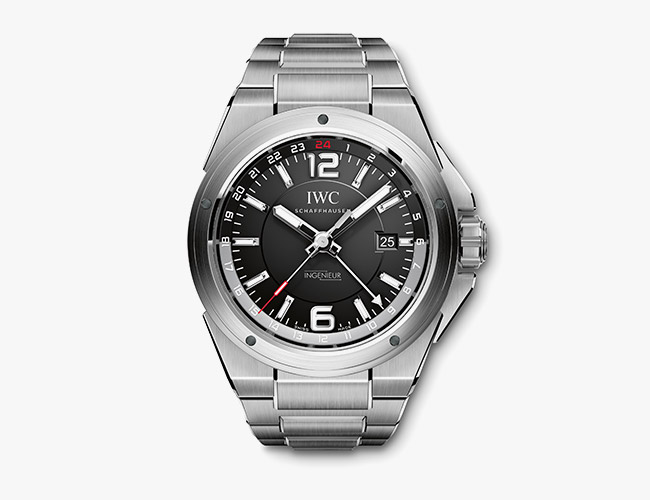
The Ingenieur has been in IWC’s lineup since the 1950s and has been branded several ways since then: scientist’s watch, explorer’s watch, and most recently, Formula 1 driver’s watch. The fact is, it’s a hard timepiece to pin down. But one thing that’s never been in question is its durability. The anti-magnetic, water-resistant chunky case of the Ingenieur is well suited to whatever world travel throws your way, and the addition of a GMT hand to its stark, legible dial makes it even more so.
Learn More: Here
Victorinox Infantry GMT
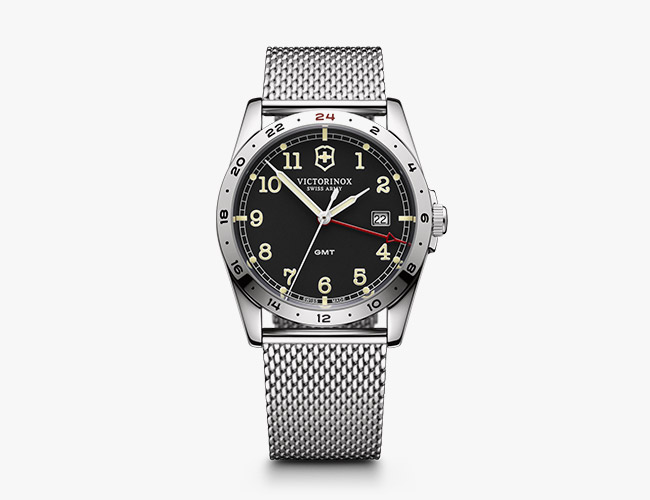
Travel isn’t getting any cheaper, even as airlines squeeze us into tiny seats with even tinier snack offerings. So spending thousands on a travel watch doesn’t always make sense if it leaves nothing left to buy a ticket to fly to a different time zone. Victorinox solves your budgeting concerns with the Infantry GMT, a handsome, Swiss-made two-timer that will looks good on your wrist whether you’re wielding a machete searching for Mayan ruins or charming your way into a five-star dining room. The bright red GMT hand leaves no doubt what time it is back home, so pay attention when you call mom.
Learn More: Here
